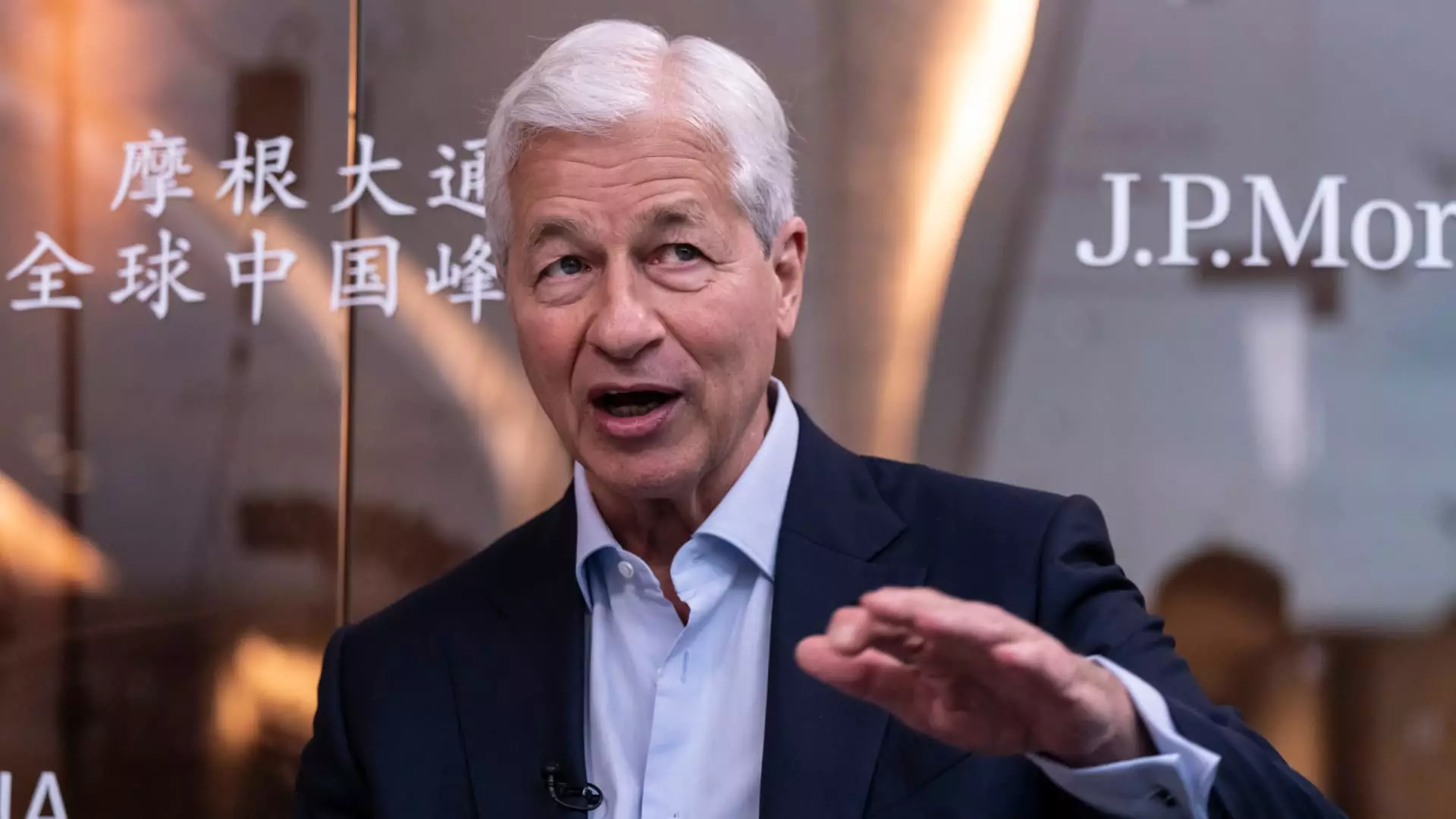As the second-quarter earnings season unfolds, it exposes a landscape riddled with economic uncertainties and industry-specific challenges. Far from being a time of robust growth, this period reveals the vulnerabilities of even the most dominant financial institutions. The expectation that S&P 500 companies will only see a modest 4.8% growth in earnings from the same quarter last year suggests a sobering reality: the era of unchecked corporate boom might be waning. This slowdown, reaching its lowest point since late 2023, serves as a warning that the economy is entering a phase of recalibration, where firms are grappling with external pressures like tariffs, inflation, and market volatility.
This slight uptick in earnings is more a reflection of resilience in certain sectors rather than genuine growth. Many companies, especially in finance and tech, face headwinds that threaten their future trajectory. The subdued expectations indicate shared anxieties about global economic stability, rising interest rates, and geopolitical tensions. It’s a wake-up call that the euphoria of previous years is giving way to cautious pragmatism—a shift that demands more transparency, responsible corporate conduct, and an acknowledgment of the fragile footing on which many businesses stand.
The Banking Sector: Between Optimism and Foreboding
Major banks such as JPMorgan Chase, Wells Fargo, Citigroup, and Bank of America dominate this earnings period, offering a window into the broader health of the financial sector. JPMorgan Chase, often viewed as the barometer for the industry, is expected to report a significant dip in earnings compared to the previous year. While its historical record of beating estimates provides some reassurance, the increasing likelihood of a rate cut by the Federal Reserve introduces a serious threat. Such a move could squeeze profit margins and limit future growth, especially as the bank shifts its focus toward cost-cutting and expense management rather than aggressive expansion.
Wells Fargo’s performance underscores ongoing challenges in balancing revenue streams. Its recent decline in revenue and net interest income signals a bank trying to adapt to a lower-interest rate environment that fans fears of stagnation. While some analysts believe the market has already priced in these difficulties, the fact remains that Wells Fargo has a streak of earnings beats—yet investor optimism remains fragile amidst the overarching economic headwinds.
Citigroup and Bank of America offer contrasting narratives. Citigroup’s recent outperformance suggests that diverse revenue sources—like fixed income and trading—can still fuel earnings growth. Nonetheless, rising expenses and provisions hint at an underlying caution. Meanwhile, Bank of America’s moderate growth and underperformance relative to its peers highlight that even well-established institutions are not immune to the broader trend of slowing profit margins and increased operational costs. Their earnings reports will speak directly to investor confidence in the resilience of the banking sector and in the wider economy.
Consumer and Healthcare Giants: Indicators of Broader Market Sentiment
The upcoming earnings from companies like Johnson & Johnson and Netflix demonstrate the wider economic implications. Johnson & Johnson, traditionally a resilient performer with a consistent record of beating earnings for over a decade, now faces an industry-specific threat: tariffs. The looming threat of a 200% levy on pharmaceutical imports could undermine its international revenue streams and tarnish its image as a stable health care icon. The fact that J&J’s recent success has been almost predictable adds to the concern that external regulatory pressures could abruptly change the game.
Netflix’s bulletin, meanwhile, symbolizes the tension within the tech and entertainment sectors. The streaming giant’s expected earnings surge of 45% highlights the ongoing consumer appetite for digital entertainment. Yet, this optimism can be deceptive. The company operates in a highly competitive environment that is sensitive to broader economic shifts, consumer spending patterns, and regulatory scrutiny. If the growth doesn’t meet expectations, it could signal a readiness for broader correction in high-growth tech stocks, possibly reflections of a market that is overheated or overly optimistic about the sector’s prospects.
The Wall Street Powerhouses: Market Sentiment and Future Trajectory
Names like Morgan Stanley and Goldman Sachs have a different role in this earnings saga—they serve as barometers for investor sentiment and the health of capital markets. Morgan Stanley’s reliance on wealth management and equity trading revenue demonstrates how financial services adapt but also become increasingly intertwined with market performance itself. Elevated commission activity suggests some positive momentum, yet doubts linger over whether this strength can be sustained in an environment of rising geopolitical risk and economic slowdown.
Goldman Sachs, with its impressive expected 10% earnings increase, seems to buck the trend of malaise. Its resilience may stem from diversified revenue streams that include investment banking and trading. However, the historical tendency for goldman’s shares to be “little changed” on earnings day reveals that stock prices are often driven not just by results but by market sentiment. If the broader economy weakens unexpectedly, the market’s optimism could quickly unravel, exposing the fragility of confidence in the financial behemoth.
The Broader Lessons: A Call for Caution in a Cautiously Optimistic Economy
This earnings season, in essence, underscores a critical reality: the apparent stability of the economy and corporate profits masks deep-seated vulnerabilities. The lessons are clear. The era of unchecked corporate growth is giving way to a time where strategic caution and responsible investing are paramount. Investors need to question the narrative of continued growth, recognize that external shocks—such as tariffs, inflation, or geopolitical tensions—can rapidly undo recent gains.
From a center-left liberal perspective, this moment serves as an appeal for more accountability and transparency from major corporations and policymakers. The


Leave a Reply